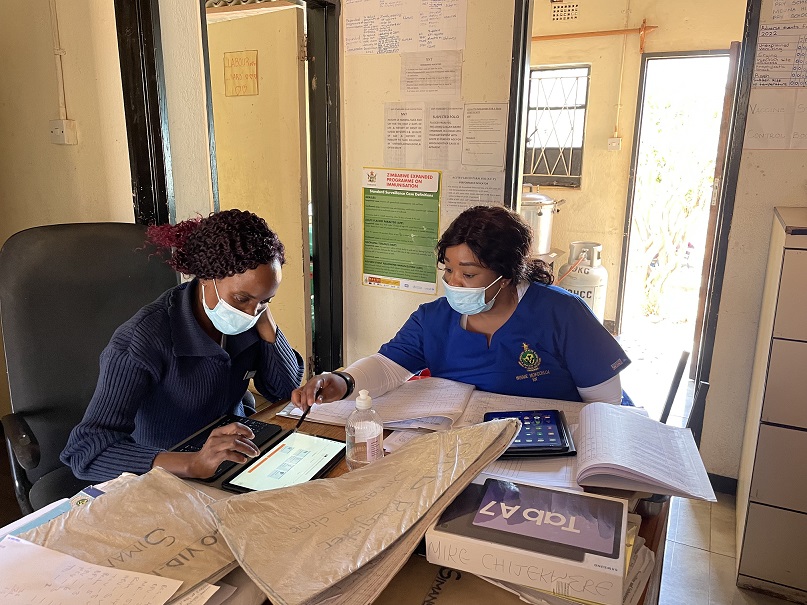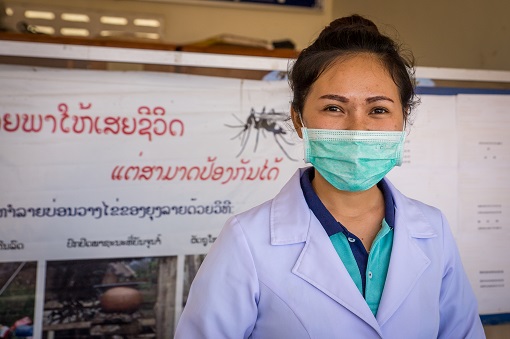Working with governments to better understand and address Anopheles mosquito populations
The mosquito is the single deadliest animal on earth, serving as the vector for many diseases, including malaria. Despite progress over the last decades to reduce the human toll of malaria, nearly half of the world’s population remains at risk. The burden of disease is still staggering—in 2022 alone, an estimated 249 million malaria cases led to 608,000 deaths.
The principal malaria prevention tools, such as bed nets and indoor residual spraying, work by reducing malaria transmission opportunities: they rely on preventing the vector—Anopheles mosquitoes—from passing the disease to humans by reducing the size of the mosquito population or their ability to bite people. However, over the last few decades, mosquitoes have developed resistance to insecticides such as pyrethroids and DDT, which are used on bed nets and for spraying houses.
Many government systems keep records of how many people have been infected by and died from malaria, where cases come from, and what interventions are deployed. However, knowledge of where mosquito vectors lay their eggs, how they behave, and their susceptibility to insecticides is critical to making smart decisions. Coupled with malaria disease data, information about the mosquitoes themselves can help governments effectively select the most useful tools for preventing malaria in targeted locations.
Since 2007, CHAI has supported government malaria programs to strengthen entomological data capacity by conducting training, evaluating vector control tools, and analyzing vector data. By better understanding Anopheles mosquitoes and the status of our current prevention tools, governments can make data-informed malaria intervention decisions.
Keeping an eye on insecticide resistance and how it could impact malaria prevention tools

Mosquito resistance to the insecticides used in bed nets and indoor residual spraying threaten the ability of these core tools to prevent malaria effectively. In Honduras, for example, 95 percent of malaria cases are concentrated in Gracias a Dios, a region that relies on these interventions to prevent malaria. In 2022, insecticide resistance was discovered in Nicaragua near the southern border of Gracias a Dios, triggering an investigation. CHAI and the Universidad Nacional Autónoma de Honduras helped the government of Honduras assess whether resistance had also spread into Gracias a Dios – which, if found, would prompt a switch to more expensive products.
The results indicated that for now, mosquitoes tested from the sites are still susceptible, suggesting that the pyrethroid- and carbamate-based prevention tools continue to be effective in Honduras and existing commodities are still viable for deployment. Nevertheless, surveillance efforts need to be sustained, and timely modifications need to be made to vector control strategies in the event of future insecticide resistance.
Using sentinel sites to understand broader transmission trends
Some countries repeatedly measure mosquitoes in places representative of larger geographical areas based on ecological, epidemiological, or political factors (political boundaries) to collect routine data on mosquito behavior. These sites aim to track long-term changes and identify possible risks to the larger area they represent. However, to obtain useful data, there must be enough sites to capture the variations in mosquito behavior that may occur across a country. The Democratic Republic of the Congo (DRC) provides an excellent case study. Initially, the country aimed to have a malaria sentinel site in each of the 26 provinces, yet only 11 were routinely operational in 2021. The remaining 15 provincial sites lacked trained operators and equipment, preventing appropriate supervision and data collection of minimum entomological indicators.
Between 2021 and 2022, CHAI supported the government in making these 15 sites functional by (i) analyzing funding gaps and advocating for alternative funding sources, (ii) capacitating staff to conduct entomological surveillance and procuring mosquito capture equipment, and (iii) working with partners to improve mosquito sampling efficiency by reducing field collection (and in turn, resource use) from four to two rounds per year. Lastly, we helped digitize the entomological database for easier data collection and faster decision-making. Yet, there is still work to do—DRC is a large and high-burden country, and plans are in place to double the current sentinel site count to 52 to better serve the population.
Informing future control efforts with surveillance findings

In Zimbabwe, Binga district remains the only high malaria burden area in Matabeleland North province despite consistent high indoor residual spraying coverage. Prior efforts to investigate the causes of the high burden of malaria through entomological surveillance and outbreak investigations were not conclusive.
Following an approach developed by the University of California-San Francisco, CHAI facilitated discussions between district, provincial, and national malaria officials to prioritize entomological surveillance activities that identify malaria transmission drivers. Locally caught mosquitoes were tested in laboratories at Africa University, which revealed resistance to routinely deployed insecticides. In tandem with these activities, investigations uncovered that students contributed more than 50 percent of cases. The students were living in boarding structures that had not been targeted for spraying during the 2022-23 indoor residual spraying season. Together, these complementary findings strengthened Binga’s ability to plan and conduct appropriate activities that reached high-risk groups in targeted locations. CHAI will continue to support the malaria program in additional endemic districts to streamline entomological surveillance work to answer priority questions.
Enabling timely decision-making with streamlined data management

Establishing entomological surveillance is a necessary first step, but it is only useful when the data are used in a timely manner for decision-making. Lao PDR has made significant progress in its goal to eliminate malaria by 2030. By increasing entomological data availability and timely data use, confirmed cases have substantially declined, plummeting tenfold within a decade from nearly 40,000 cases in 2013.
Improvements to Entomological Surveillance
Historically, entomological field data have been recorded on paper-based forms and then transcribed, stored, and analyzed across numerous spreadsheets. However, the data entry-to-analysis process is time-consuming and slows data-based decision-making. Lao PDR’s national malaria control program is leading a collaboration with data digitization support from CHAI and the World Health Organization (WHO) to develop a fit-for-purpose, digitized entomological surveillance data module within the program’s broader health information management platform, which currently stores a variety of malaria-related data. The module will include a dashboard view and automatically calculate several key indicators that will facilitate swifter, data-based decisions on vector control.
Malaria continues to be one of the leading causes of death globally despite efforts to control transmission. By helping ministries of health build systems to investigate the mosquitoes that spread disease routinely, we can make malaria prevention interventions more efficient, impactful, and well-adapted to their context, driving down the burden of this deadly but preventable disease.
Contributing writers: Lucia Fernandez, Munashe Madinga, Laurie Abraham, Vilayphone Phongchantha, Tara Seethaler.





